Nature
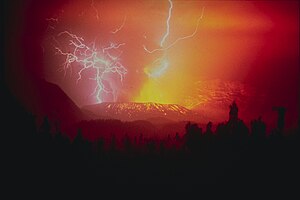
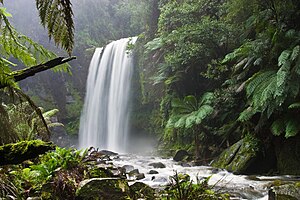
Nature, in the broadest sense, is equivalent to the natural world, or the environment, physical universe, material world or material universe. "Nature" refers to the phenomena of the physical world, and also to life in general. The term generally does not include manufactured objects and human interaction unless qualified in ways such as, e.g., "human nature" or "the whole of nature". Nature is also generally distinguished from the supernatural. It ranges in scale from the subatomic to the galactic.
The word "nature" is derived from the Latin word natura, or "the course of things, natural character."[1] Natura was a Latin translation of the Greek word physis (φύσις), which originally related to the intrinsic characteristics that plants, animals, and other features of the world develop of their own accord.[2] This is shown in the first written use of the word φύσις, in connection with a plant.[3] The concept of nature as a whole, the physical universe, is one of several expansions of the original notion; it began with certain core applications of the word φύσις by pre-Socratic philosophers, and has steadily gained currency ever since. This usage was confirmed during the advent of modern scientific method in the last several centuries.[4][5]
Within the various uses of the word today, "nature" may refer to the general realm of various types of living plants and animals, and in some cases to the processes associated with inanimate objects – the way that particular types of things exist and change of their own accord, such as the weather and geology of the Earth, and the matter and energy of which all these things are composed. It is often taken to mean the "natural environment" or wilderness – wild animals, rocks, forest, beaches, and in general those things that have not been substantially altered by human intervention, or which persist despite human intervention. This more traditional concept of natural things which can still be found today implies a distinction between the natural and the artificial, with the latter being understood as that which has been brought into being by a human or human-like consciousness or mind.
Contents
|
[edit] Earth

- Main articles: Earth, Earth science, structure of the Earth, plate tectonics, and geology
Earth (or, "the earth") is the fifth largest planet in the solar system, third in order of distance from the Sun. It is the largest of its planetary system's terrestrial planets and the only place in the universe known to support life.
The most prominent features of the earth's climate are its two large polar regions, two relatively narrow temperate zones, and a wide equatorial tropical to subtropical region.[6] Precipitation patterns vary widely according to location, ranging from several metres of water per year to less than a millimetre. About 70 percent of the surface is covered by salt-water oceans. The remainder consists of continents and islands, with the vast majority of the inhabited land in the Northern Hemisphere.
Earth has evolved through geological and biological processes that have left traces of the original conditions. The outer surface is divided into several tectonic plates that gradually migrate across the surface over geologic time spans, which at least several times have changed relatively quickly. The interior of the planet remains active, with a thick layer of molten Earth mantle and an iron-filled core that generates a magnetic field.
The atmospheric conditions have been significantly altered from the original conditions by the presence of life forms,[7] which create an ecological balance that stabilizes the surface conditions. Despite the wide regional variations in climate by latitude and other geographic factors, the long-term average global climate is quite stable during interglacial periods,[8] and variations of a degree or two of average global temperature have historically had major effects on the ecological balance, and on the actual geography of the Earth.[9][10]
[edit] Historical perspective
- Main article: History of Earth

Based on the available evidence, scientists have reconstructed detailed information about the planet's past. Earth is estimated to have formed approximately 4.55 billion years ago out of the solar nebula, along with the Sun and other planets.[12] The moon formed relatively soon afterwards (roughly 20 million years later, or 4.53 billion years ago).
Initially molten, the outer layer of the planet cooled, resulting in the solid crust. Outgassing and volcanic activity produced the primordial atmosphere. Condensing water vapor, augmented by ice delivered by comets, produced the oceans.[13] The highly energetic chemistry is believed to have produced a self-replicating molecule around 4 billion years ago.[14]
Continents formed, then broke up and re-formed as the surface of Earth reshaped itself over the course of hundreds of millions of years, occasionally combining to make a supercontinent. Roughly 750 million years ago, the earliest known supercontinent Rodinia, began to break apart. The continents later recombined to form Pannotia which broke apart about 540 million years ago, then finally Pangaea, which broke apart about 180 million years ago.[15]

There is significant evidence, still being discussed among scientists, that a severe glacial action during the Neoproterozoic era covered much of the planet in a sheet of ice. This hypothesis has been termed the "Snowball Earth", and it is of particular interest as it precedes the Cambrian explosion in which multicellular life forms began to proliferate about 530-540 million years ago.[18]
Since the Cambrian explosion there have been five distinctly identifiable mass extinctions.[19] The last mass extinction occurred some 65 million years ago, when a meteorite collision probably triggered the extinction of the non-avian dinosaurs and other large reptiles, but spared small animals such as mammals, which then resembled shrews. Over the past 65 million years, mammalian life diversified.[20]
Several million years ago, a species of small African ape gained the ability to stand upright.[21] The subsequent advent of human life, and the development of agriculture and further civilization allowed humans to affect the Earth more rapidly than any previous life form, affecting both the nature and quantity of other organisms as well as global climate. (By comparison, the Oxygen Catastrophe, produced by the proliferation of algae during the Siderian period, required about 300 million years to culminate.)
The present era is classified as part of a mass extinction event, the Holocene extinction event, the fastest ever to have occurred.[22][23] Some, such as E. O. Wilson of Harvard University, predict that human destruction of the biosphere could cause the extinction of one-half of all species in the next 100 years.[24] The extent of the current extinction event is still being researched, debated and calculated by biologists.[25]
[edit] Atmosphere, climate and weather
- Main articles: Earth's atmosphere, climate, and weather
The atmosphere of the Earth serves as a key factor in sustaining the planetary ecosystem. The thin layer of gases that envelops the Earth is held in place by the planet's gravity. Dry air consists of 78% nitrogen, 21% oxygen, 1% argon and other inert gases, carbon dioxide, etc.; but air also contains a variable amount of water vapor. The atmospheric pressure declines steadily with altitude, and has a scale height of about 8 kilometres at the Earth's surface: the height at which the atmospheric pressure has declined by a factor of e (a mathematical constant equal to 2.71...).[26][27] The ozone layer of the Earth's atmosphere plays an important role in depleting the amount of ultraviolet (UV) radiation that reaches the surface. As DNA is readily damaged by UV light, this serves to protect life at the surface. The atmosphere also retains heat during the night, thereby reducing the daily temperature extremes.
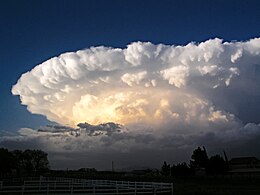
Terrestrial weather occurs almost exclusively in the lower part of the atmosphere, and serves as a convective system for redistributing heat. Ocean currents are another important factor in determining climate, particularly the major underwater thermohaline circulation which distributes heat energy from the equatorial oceans to the polar regions. These currents help to moderate the differences in temperature between winter and summer in the temperate zones. Also, without the redistributions of heat energy by the ocean currents and atmosphere, the tropics would be much hotter, and the polar regions much colder.
Weather can have both beneficial and harmful effects. Extremes in weather, such as tornadoes or hurricanes and cyclones, can expend large amounts of energy along their paths, and produce devastation. Surface vegetation has evolved a dependence on the seasonal variation of the weather, and sudden changes lasting only a few years can have a dramatic effect, both on the vegetation and on the animals dependent on its growth for their food.
The planetary climate is a measure of the long-term trends in the weather. Various factors are known to influence the climate, including ocean currents, surface albedo, greenhouse gases, variations in the solar luminosity, and changes to the planet's orbit. Based on historical records, the Earth is known to have undergone drastic climate changes in the past, including ice ages.
The climate of a region depends on a number of factors, especially latitude. A latitudinal band of the surface with similar climatic attributes forms a climate region. There are a number of such regions, ranging from the tropical climate at the equator to the polar climate in the northern and southern extremes. Weather is also influenced by the seasons, which result from the Earth's axis being tilted relative to its orbital plane. Thus, at any given time during the summer or winter, one part of the planet is more directly exposed to the rays of the sun. This exposure alternates as the Earth revolves in its orbit. At any given time, regardless of season, the northern and southern hemispheres experience opposite seasons.
Weather is a chaotic system that is readily modified by small changes to the environment, so accurate weather forecasting is currently limited to only a few days. Overall, two things are currently happening worldwide: (1) temperature is increasing on the average; and (2) regional climates have been undergoing noticeable changes.[28]
[edit] Life

- Main articles: Life and Biosphere
Although there is no universal agreement on the definition of life, scientists generally accept that the biological manifestation of life is characterized by organization, metabolism, growth, adaptation, response to stimuli and reproduction.[29] Life may also be said to be simply the characteristic state of organisms.
Properties common to terrestrial organisms (plants, animals, fungi, protists, archaea and bacteria) are that they are cellular, carbon-and-water-based with complex organization, having a metabolism, a capacity to grow, respond to stimuli, and reproduce. An entity with these properties is generally considered life. However, not every definition of life considers all of these properties to be essential. Human-made analogs of life may also be considered to be life.
The biosphere is the part of Earth's outer shell — including air, land, surface rocks and water — within which life occurs, and which biotic processes in turn alter or transform. From the broadest geophysiological point of view, the biosphere is the global ecological system integrating all living beings and their relationships, including their interaction with the elements of the lithosphere (rocks), hydrosphere (water), and atmosphere (air). Currently the entire Earth contains over 75 billion tons (150 trillion pounds or about 6.8 x 1013 kilograms) of biomass (life), which lives within various environments within the biosphere.[30]
Over nine-tenths of the total biomass on Earth is plant life, on which animal life depends very heavily for its existence.[31] More than 2 million species of plant and animal life have been identified to date,[32] and estimates of the actual number of existing species range from several million to well over 50 million.[33][34][35] The number of individual species of life is constantly in some degree of flux, with new species appearing and others ceasing to exist on a continual basis.[36][37] The total number of species is presently in rapid decline.[38][39][40]
[edit] Evolution
Life, as we understand it, is currently only known to exist on the planet Earth. The origin of life is still a poorly understood process, but it is thought to have occurred about 3.9 to 3.5 billion years ago during the hadean or archean eons on a primordial earth that had a substantially different environment than is found at present.[41] These life forms possessed the basic traits of self-replication and inheritable traits. Once life had appeared, the process of evolution by natural selection resulted in the formation of ever-more diverse life forms.
Species that were unable to adapt to the changing environment and competition from other life forms became extinct. However, the fossil record retains evidence of many of these older species. Current fossil and DNA evidence shows that all existing species can trace a continual ancestry back to the first primitive life forms.[41]
The advent of photosynthesis in very basic forms of plant life worldwide allowed the sun's energy to be harvested to create conditions allowing for more complex life. The resultant oxygen accumulated in the atmosphere and gave rise to the ozone layer. The incorporation of smaller cells within larger ones resulted in the development of yet more complex cells called eukaryotes.[42] Cells within colonies became increasingly specialized, resulting in true multicellular organisms. With the ozone layer absorbing harmful ultraviolet radiation, life colonized the surface of Earth. Everything this person said is wrong a person **cough** **God** **cough** who created all of us for a reason, in the world we have today their is a lot of proof to prove HE is real.
[edit] Microbes
- Main article: Microbe
The first form of life to develop on the Earth were microbes, and they remained the only form of life on the planet until about a billion years ago when multi-cellular organisms began to appear.[43] Microorganisms are single-celled organisms that are generally smaller than the human eye can see. They include Bacteria, Fungi, Archaea and Protista.
These life forms are found in almost every location on the Earth where there is liquid water, including the interior of rocks within the planet.[44] Their reproduction is both rapid and profuse. The combination of a high mutation rate and a horizontal gene transfer[45] ability makes them highly adaptable, and able to survive in new environments, including outer space.[46] They form an essential part of the planetary ecosystem. However some microorganisms are pathogenic and can post health risk to other organisms.
[edit] Plants and animals

The distinction between plant and animal life is not sharply drawn, with some categories of life that stand between or across the two. Originally Aristotle divided all living things between plants, which generally do not move, and animals. In Linnaeus' system, these became the Kingdoms Vegetabilia (later Plantae) and Animalia. Since then, it has become clear that the Plantae as originally defined included several unrelated groups, and the fungi and several groups of algae were removed to new kingdoms. However, these are still often considered plants in many contexts. Bacterial life is sometimes included in flora,[47][48] and some classifications use the term bacterial flora separately from plant flora.
Among the many ways of classifying plants are by regional floras, which, depending on the purpose of study, can also include fossil flora, remnants of plant life from a previous era. People in many regions and countries take great pride in their individual arrays of characteristic flora, which can vary widely across the globe due to differences in climate and terrain.
Regional floras commonly are divided into categories such as native flora and agricultural and garden flora, the latter of which are intentionally grown and cultivated. Some types of "native flora" actually have been introduced centuries ago by people migrating from one region or continent to another, and become an integral part of the native, or natural flora of the place to which they were introduced. This is an example of how human interaction with nature can blur the boundary of what is considered nature.
Another category of plant has historically been carved out for weeds. Though the term has fallen into disfavor among botanists as a formal way to categorize "useless" plants, the informal use of the word "weeds" to describe those plants that are deemed worthy of elimination is illustrative of the general tendency of people and societies to seek to alter or shape the course of nature. Similarly, animals are often categorized in ways such as domestic, farm animals, wild animals, pests, etc. according to their relationship to human life.

Animals as a category have several characteristics that generally set them apart from other living things, though not traced by scientists to having legs or wings instead of roots and leaves. Animals are eukaryotic and usually multicellular (although see Myxozoa), which separates them from bacteria, archaea and most protists. They are heterotrophic, generally digesting food in an internal chamber, which separates them from plants and algae. They are also distinguished from plants, algae, and fungi by lacking cell walls.
With a few exceptions, most notably the sponges (Phylum Porifera), animals have bodies differentiated into separate tissues. These include muscles, which are able to contract and control locomotion, and a nervous system, which sends and processes signals. There is also typically an internal digestive chamber. The eukaryotic cells possessed by all animals are surrounded by a characteristic extracellular matrix composed of collagen and elastic glycoproteins. This may be calcified to form structures like shells, bones, and spicules, a framework upon which cells can move about and be reorganized during development and maturation, and which supports the complex anatomy required for mobility.
- See also: plants, botany, fauna, animal, and biology
[edit] Ecosystems

- Main articles: Ecology and Ecosystem
All forms of life interact with the environment in which they exist, and also with other life forms. In the 20th century this premise gave rise to the concept of ecosystems, which can be defined as any situation where there is interaction between organisms and their environment.
Ecosystems are composed of a variety of abiotic and biotic components that function in an interrelated way.[50] The structure and composition is determined by various environmental factors that are interrelated. Variations of these factors will initiate dynamic modifications to the ecosystem. Some of the more important components are: soil, atmosphere, radiation from the sun, water, and living organisms.
Each living organism has a continual relationship with every other element that makes up its environment. Within the ecosystem, species are connected and dependent upon one another in the food chain, and exchange energy and matter between themselves as well as with their environment.[51]

Every species has limits of tolerance to factors that affect its survival, reproductive success and ability to continue to thrive and interact sustainably with the rest of its environment, which in turn may have effects on these factors for many other species or even on the whole of life.[52] The concept of an ecosystem is thus an important subject of study, as such study provides information needed to make decisions about how human life may interact in a way that allows the various ecosystems to be sustained for future use rather than used up or otherwise rendered ineffective. For the purpose of such study, a unit of smaller size is called a microecosystem. For example, an ecosystem can be a stone and all the life under it. A macroecosystem might involve a whole ecoregion, with its drainage basin.[53]
The following ecosystems are examples of the kinds currently under intensive study:
- "continental ecosystems", such as "forest ecosystems", "meadow ecosystems" such as steppes or savannas), or agro-ecosystems,
- systems in inland waters, such as lentic ecosystem"s such as lakes or ponds; or lotic ecosystems such as rivers,
- oceanic ecosystems.
Another classification can be made by reference to its communities, such as in the case of a human ecosystem. Regional groupings of distinctive plant and animals best adapted to the region's physical natural environment, latitude, altitude, and terrain are known as biomes. The broadest classification, today under wide study and analysis, and also subject to widespread arguments about its nature and validity, is that of the entire sum of life seen as analogous to a self-sustaining organism; a theory studied as earth system science (less formally known as Gaia theory).[54][55]
[edit] Human interrelationship

Although humans currently comprise only about one-half of one percent of the total living biomass on Earth,[56] the human effect on nature is disproportionately large. Because of the extent of human influence, the boundaries between what we regard as nature and "made environments" is not clear cut except at the extremes. Even at the extremes, the amount of natural environment that is free of discernible human influence is presently diminishing at an increasingly rapid pace, or, according to some, has already disappeared.
The development of technology by the human race has allowed the greater exploitation of natural resources and has helped to alleviate some of the risk from natural hazards. In spite of this progress, however, the fate of human civilization remains closely linked to changes in the environment. There exists a highly complex feedback-loop between the use of advanced technology and changes to the environment that are only slowly becoming understood.[57] Manmade threats to the Earth's natural environment include pollution, deforestation, and disasters such as oil spills. Humans have contributed to the extinction of many plants and animals.
Humans employ nature for both leisure and economic activities. The acquisition of natural resources for industrial use remains a primary component of the world's economic system. Some activities, such as hunting and fishing, are used for both sustenance and leisure, often by different people. Agriculture was first adopted around the 9th millennium BCE. Ranging from food production to energy, nature influences economic wealth.
Although early humans gathered uncultivated plant materials for food and employed the medicinal properties of vegetation for healing,[58] most modern human use of plants is through agriculture. The clearance of large tracts of land for crop growth has led to a significant reduction in the amount available of forestation and wetlands, resulting in the loss of habitat for many plant and animal species as well as increased erosion.[59]
[edit] Wilderness

- Main articles: Wilderness and Natural environment
Wilderness is generally defined as a natural environment on Earth that has not been directly modified by human activity. Ecologists consider wilderness areas to be an integral part of the planet's self-sustaining natural ecosystem (the biosphere).
The word, "wilderness", derives from the notion of wildness; in other words that which is not controllable by humans. The word's etymology is from the Old English wildeornes, which in turn derives from wildeor meaning wild beast (wild + deor = beast, deer).[60] From this point of view, it is the wildness of a place that makes it a wilderness. The mere presence or activity of people does not disqualify an area from being "wilderness." Many ecosystems that are, or have been, inhabited or influenced by activities of people may still be considered "wild." This way of looking at wilderness includes areas within which natural processes operate without very noticeable human interference.
[edit] Beauty in nature
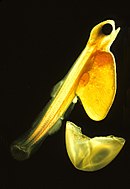

Beauty in nature is has long been a common theme in life and in art, and books emphasizing beauty in nature fill large sections of libraries and bookstores. That nature has been depicted and celebrated by so much art, photography, poetry and other literature shows the strength with which many people associate nature and beauty. Why this association exists, and what the association consists of, is studied by the branch of philosophy called aesthetics. Beyond certain basic characteristics that many philosophers agree about to explain what is seen as beautiful, the opinions are virtually endless.[62]
Looked at through the lens of the visual arts, nature and wildness have been important subjects in various epochs of world history. An early tradition of landscape art began in China during the Tang Dynasty (618-907). The tradition of representing nature as it is became one of the aims of Chinese painting and was a significant influence in Asian art. Artists learned to depict mountains and rivers "from the perspective of nature as a whole and on the basis of their understanding of the laws of nature … as if seen through the eyes of a bird." In the 13th century, the Song Dynasty artist Shi Erji listed "scenes lacking any places made inaccessible by nature," as one of the 12 things to avoid in painting.[63]
In the Western world the idea of wilderness having intrinsic value emerged in the 1800s, especially in the works of the Romantic movement. British artists John Constable and JMW Turner turned their attention to capturing the beauty of the natural world in their paintings. Before that, paintings had been primarily of religious scenes or of human beings. William Wordsworth’s poetry described the wonder of the natural world, which had formerly been viewed as a threatening place. Increasingly the valuing of nature became an aspect of Western culture.[64] This artistic movement also coincided with the Transcendentalist movement in the Western world.
Many scientists, who study nature in more specific and organized ways, also share the conviction that nature is beautiful; the French mathematician, Jules Henri Poincaré (1854-1912) said:
The scientist does not study nature because it is useful; he studies it because he delights in it, and he delights in it because it is beautiful.
If nature were not beautiful, it would not be worth knowing, and if nature were not worth knowing, life would not be worth living. Of course I do not here speak of that beauty which strikes the senses, the beauty of qualities and of appearance; not that I undervalue such beauty, far from it, but it has nothing to do with science; I mean that profounder beauty which comes from the harmonious order of the parts and which a pure intelligence can grasp.[65]
A common classical idea of beautiful art involves the word mimesis, the imitation of nature. Also in the realm of ideas about beauty in nature is that the perfect is implied through symmetry, equal division, and other perfect mathematical forms and notions.
[edit] Matter and energy
- Main articles: Matter and Energy

Some fields of science see nature as matter in motion, obeying certain laws of nature which science seeks to understand. For this reason the most fundamental science is generally understood to be "physics"—the name for which is still recognizable as meaning that it is the study of nature.
Matter is commonly defined as the substance of which physical objects are composed. It constitutes the observable universe. According to the theory of special relativity, there is no unchangeable distinction between matter and energy, because matter can be converted to energy (see annihilation), and vice versa (see matter creation). The visible components of the universe are now believed to compose only 4 percent of the total mass. The remainder is believed to consist of 23 percent cold dark matter and 73 percent dark energy.[66] The exact nature of these components is still unknown and is currently under intensive investigation by physicists.
The behavior of matter and energy throughout the observable universe appears to follow well-defined physical laws. These laws have been employed to produce cosmological models that successfully explain the structure and the evolution of the universe we can observe. The mathematical expressions of the laws of physics employ a set of twenty physical constants[67] that appear to be static across the observable universe.[68] The values of these constants have been carefully measured, but the reason for their specific values remains a mystery.
- See also: Chemistry and Physics
[edit] Nature beyond Earth


- Main articles: Outer space and Universe
Outer space, also simply called space, refers to the relatively empty regions of the universe outside the atmospheres of celestial bodies. Outer space is used to distinguish it from airspace (and terrestrial locations). There is no discrete boundary between the Earth's atmosphere and space, as the atmosphere gradually attenuates with increasing altitude. Outer space within the solar system is called interplanetary space, which passes over into interstellar space at what is known as the heliopause.
Outer space is certainly spacious, but it is far from empty. Outer space is sparsely filled with several dozen types of organic molecules discovered to date by microwave spectroscopy, blackbody radiation left over from the big bang and the origin of the universe, and cosmic rays, which include ionized atomic nuclei and various subatomic particles. There is also some gas, plasma and dust, and small meteors. Additionally, there are signs of human life in outer space today, such as material left over from previous manned and unmanned launches which are a potential hazard to spacecraft. Some of this debris re-enters the atmosphere periodically.
Although the planet Earth is currently the only known body within the solar system to support life, current evidence suggests that in the distant past the planet Mars possessed bodies of liquid water on the surface.[69] For a brief period in Mars' history, it may have also been capable of forming life. At present though, most of the water remaining on Mars is frozen. If life exists at all on Mars, it is most likely to be located underground where liquid water can still exist.[70]
Conditions on the other terrestrial planets, Mercury and Venus, appears to be too harsh to support life as we know it. But it has been conjectured that Europa, the fourth-largest moon of Jupiter, may possess a sub-surface ocean of liquid water and could potentially host life.[71]
Recently, the team of Stéphane Udry have discovered a new planet named Gliese 581 c, which is an extrasolar planet orbiting the red dwarf star Gliese 581. Gliese 581 c appears to lay in the habitable zone of space surrounding the star, and therefore could possibly host life as we know it.
Badminton

Badminton is a racquet sport played by either two opposing players (singles) or two opposing pairs (doubles), who take positions on opposite halves of a rectangular court that is divided by a net. Players score points by striking a shuttlecock with their racquet so that it passes over the net and lands in their opponents' half of the court. A rally ends once the shuttlecock has struck the ground, and the shuttlecock may only be struck once by each side before it passes over the net.
The shuttlecock is a feathered projectile whose unique aerodynamic properties cause it to fly differently from the balls used in most racquet sports; in particular, the feathers create much higher drag, causing the shuttlecock to decelerate more rapidly than a ball. Because shuttlecock flight is strongly affected by wind, competitive badminton is always played indoors. Badminton is also played outdoors as a casual recreational activity, often as a garden or beach game.
Badminton is an Olympic sport with five competitive disciplines: men's and women's singles, men's and women's doubles, and mixed doubles, in which each pair is a man and a woman. At high levels of play, the sport demands excellent fitness: players require aerobic stamina, strength, and speed. It is also a technical sport, requiring good motor coordination and the development of sophisticated racket skills.
Contents
|
[edit] History and development

Badminton was known in ancient times; an early form of the sport was played in ancient Greece and Egypt. In Japan, the related game Hanetsuki was played as early as the 16th century. In the west, badminton came from a game called battledore and shuttlecock, in which two or more players keep a feathered shuttlecock in the air with small rackets. The game was called "Poona" in India during the 18th century, and British Army officers stationed there took a competitive Indian version back to England in the 1860's, where it was played at country houses as an upper class amusement. Isaac Spratt, a London toy dealer, published a booklet, "Badminton Battledore - a new game" in 1860, but unfortunately no copy has survived.[2]
The new sport was definitively launched in 1873 at the Badminton House, Gloucestershire, owned by the Duke of Beaufort. During that time, the game was referred to as "The Game of Badminton," and, the game's official name became Badminton.[3]
Until 1887 the sport was played in England under the rules that prevailed in India. The Bath Badminton Club standardized the rules and made the game applicable to English ideas. The basic regulations were drawn up in 1887.[3] In 1893, the Badminton Association of England published the first set of rules according to these regulations, similar to today's rules, and officially launched badminton in a house called "Dunbar" at 6 Waverley Grove, Portsmouth, England on September 13 of that year.[4] They also started the All England Open Badminton Championships, the first badminton competition in the world, in 1899.
The Badminton World Federation (BWF) was established in 1934 with Canada, Denmark, England, France, the Netherlands, Ireland, New Zealand, Scotland, and Wales as its founding members. India joined as an affiliate in 1936. The BWF now governs international badminton and develops the sport globally.[5]
While originated in England, international badminton has traditionally been dominated by a few Asian countries, plus Denmark from Europe. China, Indonesia, South Korea and Malaysia are among the nations that have consistently produced world-class players in the past few decades and dominated competitions on the international level, with China being the most dominant in recent years.[6]
[edit] Laws of the game
The following information is a simplified summary of the Laws, not a complete reproduction. The definitive source of the Laws is the IBF Laws publication,[7] although the digital distribution of the Laws contains poor reproductions of the diagrams.
[edit] Playing court dimensions

The court is rectangular and divided into halves by a net. Courts are almost always marked for both singles and doubles play, although the laws permit a court to be marked for singles only. The doubles court is wider than the singles court, but both are the same length. The exception, which often causes confusion to newer players is the doubles court has a shorter serve-length dimension.
The full width of the court is 6.1 metres (20 ft), and in singles this width is reduced to 5.18 metres (17 ft). The full length of the court is 13.4 metres (44 ft). The service courts are marked by a centre line dividing the width of the court, by a short service line at a distance of 1.98 metres (6.5 ft) from the net, and by the outer side and back boundaries. In doubles, the service court is also marked by a long service line, which is 0.78 metres (2 ft 6 inch) from the back boundary.
The net is 1.55 metres (5 ft 1 inch) high at the edges and 1.524 metres (5 ft) high in the centre. The net posts are placed over the doubles side lines, even when singles is played.
There is no mention in the Laws of badminton, of a minimum height for the ceiling above the court. Nonetheless, a badminton court will not be suitable if the ceiling is likely to be hit on a high serve.
[edit] Equipment laws
The Laws specify which equipment may be used. In particular, the Laws restrict the design and size of rackets and shuttlecocks. The Laws also provide for testing a shuttlecock for the correct speed:
- 3.1
- To test a shuttlecock, use a full underhand stroke which makes contact with the shuttlecock over the back boundary line. The shuttlecock shall be hit at an upward angle and in a direction parallel to the side lines.
- 3.2
- A shuttlecock of the correct speed will land not less than 530 mm and not more than 990 mm short of the other back boundary line....
[edit] Scoring system and service
The scoring system changed in May 2006. For more information, see Scoring System Development of Badminton.
[edit] The basics
Each game is played up to 21 points, with players scoring a point whenever they win a rally (this differs from the old system, where players could only win a point on their serve). A match is the best of three games.
At the start of the rally, the server and receiver stand in diagonally opposite service courts (see court dimensions). The server hits the shuttlecock so that it would land in the receiver's service court. This is similar to tennis, except that a badminton serve must be hit from below the waist in underhand form (upwards), the shuttlecock is not allowed to bounce, and in tennis the players stand outside their service courts.
In singles, the server stands in his right service court when his score is even, and in his left service court when his score is odd.
In doubles, if the serving side wins a rally, the same player continues to serve, but he changes service courts so that he serves to each opponent in turn. When the serving side loses a rally, the serve passes to their opponents (unlike the old system, there is no "second serve"). If their new score is even, the player in the right service court serves; if odd, the player in the left service court serves. The players' service courts are determined by their positions at the start of the previous rally, not by where they were standing at the end of the rally.
A consequence of this system is that, each time a side regain the service, the server will be the player who did not serve last time.
[edit] Details
When the server serves, the shuttlecock must pass over the service line or it will count as a fault.
If the score reaches 20-all, then the game continues until one side gains a two point lead (such as 24-22), up to a maximum of 30 points (30-29 is a winning score).
At the start of a match a coin is tossed. The winners of the coin toss may choose whether to serve or receive first, or they may choose which end of the court they wish to occupy. Their opponents make the remaining choice. In less formal settings, the coin toss is often replaced by hitting a shuttlecock into the air: whichever side it points to serves first.
In subsequent games, the winners of the previous game serve first. For the first rally of any doubles game, the serving pair may decide who serves and the receiving pair may decide who receives. The players change ends at the start of the second game; if the match reaches a third game, they change ends both at the start of the game and when the leading pair's score reaches 11 points.
The server and receiver must remain within their service courts, without touching the boundary lines, until the server strikes the shuttlecock. The other two players may stand wherever they wish, so long as they do not unsight the opposing server or receiver.
[edit] Faults
Players win a rally by striking the shuttlecock onto the floor within the boundaries of their opponents' court. Players also win a rally if their opponents commit a fault. The most common fault in badminton is when the players fail to return the shuttlecock so that it passes over the net and lands inside their opponents' court, but there are also other ways that players may be faulted. The following information lists some of the more common faults.
Several faults pertain specifically to service. A serving player shall be faulted if he strikes the shuttlecock from above his waist (defined as his lowest rib), or if his racket is not pointing downwards at the moment of impact. This particular law was modified in 2006: previously, the server's racket had to be pointing downwards to the extent that the racket head was below the hand holding the racket; now, any angle below the horizontal is acceptable.
Neither the server nor the receiver may lift a foot until the shuttlecock has been struck by the server. The server must also initially hit the base (cork) of the shuttlecock, although he may afterwards also hit the feathers as part of the same stroke. This law was introduced to ban an extremely effective service style known as the S-serve or Sidek serve, which allowed the server to make the shuttlecock spin chaotically in flight.[8]
Each side may only strike the shuttlecock once before it passes back over the net; but during a single stroke movement, a player may contact a shuttlecock twice (this happens in some sliced shots). A player may not, however, hit the shuttlecock once and then hit it with a new movement, nor may he carry and sling the shuttlecock on his racket.
It is a fault if the shuttlecock hits the ceiling.
[edit] Lets
If a let is called, the rally is stopped and replayed with no change to the score. Lets may occur due to some unexpected disturbance such as a shuttlecock landing on court (having been hit there by players on an adjacent court).
If the receiver is not ready when the service is delivered, a let shall be called; yet if the receiver makes any attempt to return the shuttlecock, he shall be judged to have been ready.
There is no let if the shuttlecock hits the tape (even on service).
[edit] Equipment
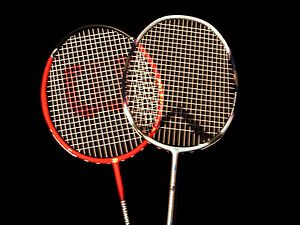
[edit] Rackets
Badminton rackets are light, with top quality rackets weighing between about 70 and 100 grams (without strings). [9][10] They are composed of many different materials ranging from carbon fibre composite (graphite reinforced plastic) to solid steel, which may be augmented by a variety of materials. Carbon fibre has an excellent strength to weight ratio, is stiff, and gives excellent kinetic energy transfer. Before the adoption of carbon fibre composite, rackets were made of light metals such as aluminium. Earlier still, rackets were made of wood. Cheap rackets are still often made of metal, but wooden rackets are no longer manufactured for the ordinary market, due to their excessive weight and cost.
There is a wide variety of racket designs, although the racket size and shape are limited by the Laws. Different rackets have playing characteristics that appeal to different players. The traditional oval head shape is still available, but an isometric head shape is increasingly common in new rackets.
[edit] Strings
Badminton strings are thin, high performing strings in the range of about 0.65 to 0.73 millimetres thickness. Thicker strings are more durable, but many players prefer the feel of thinner strings. String tension is normally in the range of 18 to 36 lbf (80 to 130 newtons). Recreational players generally string at lower tensions than professionals, typically between 18 and 25 lbf. Professionals string between about 25 and 36 lbf.
It is often argued that high string tensions improve control, whereas low string tensions increase power.[11] The arguments for this generally rely on crude mechanical reasoning, such as claiming that a lower tension stringbed is more bouncy and therefore provides more power. An alternative view suggests that the optimum tension for power depends on the player:[12] the faster and more accurately a player can swing their racket, the higher the tension for maximum power. Neither view has been subjected to a rigorous mechanical analysis, nor is there clear evidence in favour of one or the other. The most effective way for a player to find a good string tension is to experiment. Playing at high string tensions can cause injury, depending on the player's ability: few amateur players can safely play above 30 lbf, and for most players even 25 lbf is too high.
[edit] Grip
The choice of grip allows a player to increase the thickness of his racket handle and choose a comfortable surface to hold. A player may build up the handle with one or several grips before applying the final layer.
Players may choose between a variety of grip materials. The most common choices are PU synthetic grips or toweling grips. Grip choice is a matter of personal preference. Players often find that sweat becomes a problem; in this case, a drying agent may be applied to the grip or hands, or sweatbands may be used, or the player may choose another grip material or change his grip more frequently.
There are two main types of grip: replacement grips and overgrips. Replacement grips are thicker, and are often used to increase the size of the handle. Overgrips are thinner (less than 1 mm), and are often used as the final layer. Many players, however, prefer to use replacement grips as the final layer. Toweling grips are always replacement grips. Replacement grips have an adhesive backing, whereas overgrips have only a small patch of adhesive at the start of the tape and must be applied under tension; overgrips are more convenient for players who change grips frequently, because they may be removed more rapidly without damaging the underlying material.


[edit] Shuttlecock
- Main article: Shuttlecock
A shuttlecock (often abbreviated to shuttle and also known as a bird or birdie) is a high-drag projectile, with an open conical shape: the cone is formed from sixteen overlapping goose feathers embedded into a rounded cork base. The cork is covered with thin leather.
Shuttles with a plastic skirt are often used by recreational players to reduce their costs: feathered shuttles break easily.
[edit] Shoes
Badminton shoes are lightweight with soles of rubber or similar high-grip, non-marking materials.
Compared to running shoes, badminton shoes have little lateral support. High levels of lateral support are useful for activities where lateral motion is undesirable and unexpected. Badminton, however, requires powerful lateral movements. A highly built-up lateral support will not be able to protect the foot in badminton; instead, it will encourage catastrophic collapse at the point where the shoe's support fails, and the player's ankles are not ready for the sudden loading. For this reason, players should choose badminton shoes rather than general trainers or running shoes. Players should also ensure that they learn safe footwork, with the knee and foot in alignment on all lunges.
[edit] Badminton strokes

Badminton offers a wide variety of basic strokes, and players require a high level of skill to perform all of them effectively. All strokes can be played either forehand or backhand (except for the high serve, which is only ever played as a forehand). A player's forehand side is the same side as his playing hand: for a right-handed player, the forehand side is his right side and the backhand side is his left side. Forehand strokes are hit with the front of the hand leading (like hitting with the palm), whereas backhand strokes are hit with the back of the hand leading (like hitting with the knuckles). Players frequently play certain strokes on the forehand side with a backhand hitting action, and vice-versa.
In the forecourt and midcourt, most strokes can be played equally effectively on either the forehand or backhand side; but in the rearcourt, players will attempt to play as many strokes as possible on their forehands, often preferring to play a round-the-head forehand overhead (a forehand "on the backhand side") rather than attempt a backhand overhead. Playing a backhand overhead has two main disadvantages. First, the player must turn his back to his opponents, restricting his view of them and the court. Second, backhand overheads cannot be hit with as much power as forehands: the hitting action is limited by the shoulder joint, which permits a much greater range of movement for a forehand overhead than for a backhand. The backhand clear is considered by most players and coaches to be the most difficult basic stroke in the game, since precise technique is needed in order to muster enough power for the shuttlecock to travel the full length of the court. For the same reason, backhand smashes tend to be weak.
The choice of stroke depends on how near the shuttlecock is to the net, and whether it is above net height: players have much better attacking options if they can reach the shuttlecock well above net height, especially if it is also close to the net. In the forecourt, a high shuttlecock will be met with a net kill, hitting it steeply downwards and attempting to win the rally immediately. In the midcourt, a high shuttlecock will usually be met with a powerful smash, also hitting downwards and hoping for an outright winner or a weak reply. Athletic jump smashes, where players jump upwards for a steeper smash angle, are a common and spectacular element of elite men's doubles play. In the rearcourt, players strive to hit the shuttlecock while it is still above them, rather than allowing it to drop lower. This overhead hitting allows them to play smashes, clears (hitting the shuttlecock high and to the back of the opponents' court), and dropshots (hitting the shuttlecock so that it falls softly downwards into the opponents' forecourt). If the shuttlecock has dropped lower, then a smash is impossible and a full-length, high clear is difficult.
When the shuttlecock is well below net height, players have no choice but to hit upwards. Lifts, where the shuttlecock is hit upwards to the back of the opponents' court, can be played from all parts of the court. If a player does not lift, his only remaining option is to push the shuttlecock softly back to the net: in the forecourt this is called a netshot; in the midcourt or rearcourt, it is often called a push or block.
When the shuttlecock is near to net height, players can hit drives, which travel flat and rapidly over the net into the opponents' rear midcourt and rearcourt. Pushes may also be hit flatter, placing the shuttlecock into the front midcourt. Drives and pushes may be played from the midcourt or forecourt, and are most often used in doubles: they are an attempt to regain the attack, rather than choosing to lift the shuttlecock and defend against smashes. After a successful drive or push, the opponents will often be forced to lift the shuttlecock.
When defending against a smash, players have three basic options: lift, block, or drive. In singles, a block to the net is the most common reply. In doubles, a lift is the safest option but it usually allows the opponents to continue smashing; blocks and drives are counter-attacking strokes, but may be intercepted by the smasher's partner. Many players use a backhand hitting action for returning smashes on both the forehand and backhand sides, because backhands are more effective than forehands at covering smashes directed to the body.
The service presents its own array of stroke choices. Unlike in tennis, the serve is restricted by the Laws so that it must be hit upwards. The server can choose a low serve into the forecourt (like a push), or a lift to the back of the service court, or a flat drive serve. Lifted serves may be either high serves, where the shuttlecock is lifted so high that it falls almost vertically at the back of the court, or flick serves, where the shuttlecock is lifted to a lesser height but falls sooner.
Once players have mastered these basic strokes, they can hit the shuttlecock from and to any part of the court, powerfully and softly as required. Beyond the basics, however, badminton offers rich potential for advanced stroke skills that provide a competitive advantage. Because badminton players have to cover a short distance as quickly as possible, the purpose of many advanced strokes is to deceive the opponent, so that either he is tricked into believing that a different stroke is being played, or he is forced to delay his movement until he actually sees the shuttle's direction. "Deception" in badminton is often used in both of these senses. When a player is genuinely deceived, he will often lose the point immediately because he cannot change his direction quickly enough to reach the shuttlecock. Experienced players will be aware of the trick and cautious not to move too early, but the attempted deception is still useful because it forces the opponent to delay his movement slightly. Against weaker players whose intended strokes are obvious, an experienced player will move before the shuttlecock has been hit, anticipating the stroke to gain an advantage.
Slicing and using a shortened hitting action are the two main technical devices that facilitate deception. Slicing involves hitting the shuttlecock with an angled racket face, causing it to travel in a different direction than suggested by the body or arm movement. Slicing also causes the shuttlecock to travel much slower than the arm movement suggests. For example, a good crosscourt sliced dropshot will use a hitting action that suggests a straight clear or smash, deceiving the opponent about both the power and direction of the shuttlecock. A more sophisticated slicing action involves brushing the strings around the shuttlecock during the hit, in order to make the shuttlecock spin. This can be used to improve the shuttle's trajectory, by making it dip more rapidly as it passes the net; for example, a sliced low serve can travel slightly faster than a normal low serve, yet land on the same spot. Spinning the shuttlecock is also used to create spinning netshots (also called tumbling netshots), in which the shuttlecock turns over itself several times (tumbles) before stabilizing; sometimes the shuttlecock remains inverted instead of tumbling. The main advantage of a spinning netshot is that the opponent will be unwilling to address the shuttlecock until it has stopped tumbling, since hitting the feathers will result in an unpredictable stroke. Spinning netshots are especially important for high level singles players.
The lightness of modern rackets allows players to use a very short hitting action for many strokes, thereby maintaining the option to hit a powerful or a soft stroke until the last possible moment. For example, a singles player may hold his racket ready for a netshot, but then flick the shuttlecock to the back instead with a shallow lift. This makes the opponent's task of covering the whole court much more difficult than if the lift was hit with a bigger, obvious swing. A short hitting action is not only useful for deception: it also allows the player to hit powerful strokes when he has no time for a big arm swing. The use of grip tightening is crucial to these techniques, and is often described as finger power. Elite players develop finger power to the extent that they can hit some power strokes, such as net kills, with less than a 10 cm racket swing.
It is also possible to reverse this style of deception, by suggesting a powerful stroke before slowing down the hitting action to play a soft stroke. In general, this latter style of deception is more common in the rearcourt (for example, dropshots disguised as smashes), whereas the former style is more common in the forecourt and midcourt (for example, lifts disguised as netshots).
Deception is not limited to slicing and short hitting actions. Players may also use double motion, where they make an initial racket movement in one direction before withdrawing the racket to hit in another direction. This is typically used to suggest a crosscourt angle but then play the stroke straight, or vice-versa. Triple motion is also possible, but this is very rare in actual play. An alternative to double motion is to use a racket head fake, where the initial motion is continued but the racket is turned during the hit. This produces a smaller change in direction, but does not require as much time.
[edit] Strategy
To win in badminton, players need to employ a wide variety of strokes in the right situations. These range from powerful jumping smashes to delicate tumbling net returns. Often rallies finish with a smash, but setting up the smash requires subtler strokes. For example, a netshot can force the opponent to lift the shuttlecock, which gives an opportunity to smash. If the netshot is tight and tumbling, then the opponent's lift will not reach the back of the court, which makes the subsequent smash much harder to return.
Deception is also important. Expert players make the preparation for many different strokes look identical, and use slicing to deceive their opponents about the speed or direction of the stroke. If an opponent tries to anticipate the stroke, he may move in the wrong direction and may be unable to change his body momentum in time to reach the shuttlecock.
[edit] Doubles
Both pairs will try to gain and maintain the attack, hitting downwards as much as possible. Whenever possible, a pair will adopt an ideal attacking formation with one player hitting down from the rearcourt, and his partner in the midcourt intercepting all smash returns except the lift. If the rearcourt attacker plays a dropshot, his partner will move into the forecourt to threaten the net reply. If a pair cannot hit downwards, they will use flat strokes in an attempt to gain the attack. If a pair is forced to lift or clear the shuttlecock, then they must defend: they will adopt a side-by-side position in the rear midcourt, to cover the full width of their court against the opponents' smashes.
At high levels of play, the backhand serve has become popular to the extent that forehand serves almost never appear in professional games. The straight low serve is used most frequently, in an attempt to prevent the opponents gaining the attack immediately. Flick serves are used to prevent the opponent from anticipating the low serve and attacking it decisively.
At high levels of play, doubles rallies are extremely fast. Men's doubles is the most aggressive form of badminton, with a high proportion of powerful jump smashes.

[edit] Singles
The singles court is narrower than the doubles court, but the same length. Since one person needs to cover the entire court, singles tactics are based on forcing the opponent to move as much as possible; this means that singles strokes are normally directed to the corners of the court. Players exploit the length of the court by combining lifts and clears with dropshots and netshots. Smashing is less prominent in singles than in doubles because players are rarely in the ideal position to execute a smash, and smashing often leaves the smasher vulnerable if the smash is returned.
In singles, players will often start the rally with a forehand high serve. Low serves are also used frequently, either forehand or backhand. Flick serves are less common, and drive serves are rare.
At high levels of play, singles demands extraordinary fitness. Singles is a game of patient positional maneuvering, unlike the all-out aggression of doubles.
[edit] Mixed doubles
In mixed doubles, both pairs try to maintain an attacking formation with the woman at the front and the man at the back. This is because the male players are substantially stronger, and can therefore produce more powerful smashes. As a result, mixed doubles requires greater tactical awareness and subtler positional play. Clever opponents will try to reverse the ideal position, by forcing the woman towards the back or the man towards the front. In order to protect against this danger, mixed players must be careful and systematic in their shot selection.[13]
At high levels of play, the formations will generally be more flexible: the top women players are capable of playing powerfully from the rearcourt, and will happily do so if required. When the opportunity arises, however, the pair will switch back to the standard mixed attacking position, with the woman in front.
[edit] Governing bodies
The Badminton World Federation (BWF) is the internationally recognised governing body of the sport. The BWF headquarters are currently located in Kuala Lumpur, Malaysia.
Five regional confederations are associated with the IBF:
- Asia: Badminton Asia Confederation (BAC)
- Africa: Africa Badminton Federation (ABF)
- Americas: Badminton Pan Am (North America and South America belong to the same confederation; BPA)
- Europe: Badminton Europe (BE)
- Oceania: Badminton Oceania (BO)
[edit] Competitions
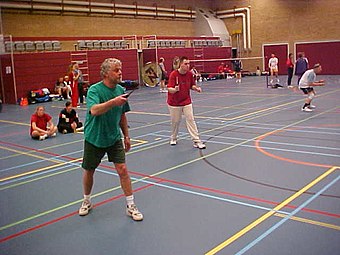
The BWF organizes several international competitions, including the Thomas Cup, the premier men's event, and the Uber Cup, the women's equivalent. The competitions take place once every two years. More than 50 national teams compete in qualifying tournaments within continental confederations for a place in the finals. The final tournament involves 12 teams, following an increase from eight teams in 2004.
The Sudirman Cup, a mixed team event held once every two years, began in 1989. It is divided into seven groups based on the performance of each country. To win the tournament, a country must perform well across all five disciplines (men's doubles and singles, women's doubles and singles, and mixed doubles). Like soccer, it features a promotion and relegation system in every group.
Individual competition in badminton was a demonstration event in the 1972 and 1988 Summer Olympics. It became a Summer Olympics sport at the Barcelona Olympics in 1992. The 32 highest ranked badminton players in the world participate in the competition, and each country submitting three players to take part. In the BWF World Championships, only the highest ranked 64 players in the world, and a maximum of three from each country, can participate in any category.
All these tournaments, along with the BWF World Junior Championships, are level one tournaments.
At the start of 2007, the BWF also introduce a new tournament structure: the BWF Super Series. This level two tournament will stage twelve open tournaments around the world with 32 players (half the previous limit). The players collect points that determine whether they can play in Super Series Final held at the year end.[14][15]
Level three tournaments will consist of Grand Prix Gold and Grand Prix. Top players can collect the world ranking points and enable them to play in the BWF Super Series open tournaments. These include the regional competitions in Asia (Badminton Asia Championships) and Europe (European Badminton Championships), which produce the world's best players as well as the Pan America Badminton Championships.
The level four tournaments, known as International Challenge, International Series and Future Series, encourages participation by junior players.[16]
[edit] Records
The most powerful stroke in badminton is the smash, which is hit steeply downwards into the opponents' midcourt. The maximum speed of a smashed shuttlecock exceeds that of any other racket sport projectile. The recordings of this speed measure the initial speed of the shuttlecock immediately after it has left the player's racket.
Men's doubles player Fu Haifeng of China set the official world smash record of 332 km/h (206 mph) on June 3, 2005 in the Sudirman Cup. The fastest smash recorded in the singles competition is 305 km/h (189 mph) by Taufik Hidayat of Indonesia.[17]
[edit] Comparisons with other racket sports
Badminton is frequently compared to tennis. The following is a list of uncontentious comparisons:
- In tennis, the ball may bounce once before the player hits it; in badminton, the rally ends once the shuttlecock touches the floor.
- In tennis, the serve is dominant to the extent that the server is expected to win most of his service games; a break of service, where the server loses the game, is of major importance in a match. In badminton, however, the serving side and receiving side have approximately equal opportunity to win the rally.
- In tennis, the server is allowed two attempts to make a correct serve; in badminton, the server is allowed only one attempt.
- In tennis, a let is played on service if the ball hits the net tape; in badminton, there is no let on service.
- The tennis court is larger than the badminton court.
- Tennis rackets are about four times heavier than badminton rackets, 10-12 ounces (approximately 284-340 grams) versus 85-93 grams.[18][19] Tennis balls are about 10 times heavier than shuttlecocks, 57 grams versus 5 grams.[20][21]
- The fastest recorded tennis stroke is Andy Roddick's 153 mph (246 km/h) serve;[22] the fastest recorded badminton stroke is Fu Haifeng's 206 mph (332 km/h) smash.[23]
[edit] Comparisons of speed and athletic requirements
Statistics such as the 206 mph (332 km/h) smash speed, below, prompt badminton enthusiasts to make other comparisons that are more contentious. For example, it is often claimed that badminton is the fastest racket sport.[24] Although badminton holds the record for the fastest initial speed of a racket sports projectile, the shuttlecock decelerates substantially faster than other projectiles such as tennis balls. In turn, this qualification must be qualified by consideration of the distance over which the shuttlecock travels: a smashed shuttlecock travels a shorter distance than a tennis ball during a serve. Badminton's claim as the fastest racket sport might also be based on reaction time requirements, but arguably table tennis requires even faster reaction times.
There is a strong case for arguing that badminton is more physically demanding than tennis, but such comparisons are difficult to make objectively due to the differing demands of the games. Some informal studies suggest that badminton players require much greater aerobic stamina than tennis players, but this has not been the subject of rigorous research.[25]
A more balanced approach might suggest the following comparisons, although these also are subject to dispute:
- Badminton, especially singles, requires substantially greater aerobic stamina than tennis; the level of aerobic stamina required by badminton singles is similar to squash singles, although squash may have slightly higher aerobic requirements.
- Tennis requires greater upper body strength than badminton.
- Badminton requires greater leg strength than tennis, and badminton men's doubles probably requires greater leg strength than any other racket sport due to the demands of performing multiple consecutive jumping smashes.
- Badminton requires much greater explosive athleticism than tennis and somewhat greater than squash, with players required to jump for height or distance.
- Badminton requires significantly faster reaction times than either tennis or squash, although table tennis may require even faster reaction times. The fastest reactions in badminton are required in men's doubles, when returning a powerful smash.
[edit] Comparisons of technique
Badminton and tennis techniques differ substantially. The lightness of the shuttlecock and of badminton rackets allow badminton players to make use of the wrist and fingers much more than tennis players; in tennis the wrist is normally held stable, and playing with a mobile wrist may lead to injury. For the same reasons, badminton players can generate power from a short racket swing: for some strokes such as net kills, an elite player's swing may be less than 10cm. For strokes that require more power, a longer swing will typically be used, but the badminton racket swing will rarely be as long as a typical tennis swing.
It is often asserted that power in badminton strokes comes mainly from the wrist. This is a misconception and may be criticised for two reasons. First, it is strictly speaking a category error: the wrist is a joint, not a muscle; its movement is controlled by the forearm muscles. Second, wrist movements are weak when compared to forearm or upper arm movements. Badminton biomechanics have not been the subject of extensive scientific study, but some studies confirm the minor role of the wrist in power generation, and indicate that the major contributions to power come from internal and external rotations of the upper and lower arm.[26] Modern coaching resources such as the Badminton England Technique DVD reflect these ideas by emphasising forearm rotation rather than wrist movements.[27]
[edit] Distinctive characteristics of the shuttlecock
The shuttlecock differs greatly from the balls used in most other racket sports.
[edit] Aerodynamic drag and stability
The feathers impart substantial drag, causing the shuttlecock to decelerate greatly over distance. The shuttlecock is also extremely aerodynamically stable: regardless of initial orientation, it will turn to fly cork-first, and remain in the cork-first orientation.
One consequence of the shuttlecock's drag is that it requires considerable skill to hit it the full length of the court, which is not the case for most racket sports. The drag also influences the flight path of a lifted (lobbed) shuttlecock: the parabola of its flight is heavily skewed so that it falls at a steeper angle than it rises. With very high serves, the shuttlecock may even fall vertically.
[edit] Spin
Balls may be spun to alter their bounce (for example, topspin and backspin in tennis), and players may slice the ball (strike it with an angled racket face) to produce such spin; but, since the shuttlecock is not allowed to bounce, this does not apply to badminton.
Slicing the shuttlecock so that it spins, however, does have applications, and some are peculiar to badminton. (See Basic strokes for an explanation of technical terms.)
- Slicing the shuttlecock from the side may cause it to travel in a different direction from the direction suggested by the player's racket or body movement. This is used to deceive opponents.
- Slicing the shuttlecock from the side may cause it to follow a slightly curved path (as seen from above), and the deceleration imparted by the spin causes sliced strokes to slow down more suddenly towards the end of their flight path. This can be used to create dropshots and smashes that dip more steeply after they pass the net.
- When playing a netshot, slicing underneath the shuttlecock may cause it to turn over itself (tumble) several times as it passes the net. This is called a spinning netshot or tumbling netshot. The opponent will be unwilling to address the shuttlecock until it has corrected its orientation.
Due to the way that its feathers overlap, a shuttlecock also has a slight natural spin about its axis of rotational symmetry. The spin is in an anticlockwise direction as seen from above when dropping a shuttlecock. This natural spin affects certain strokes: a tumbling netshot is more effective if the slicing action is from right to left, rather than from left to right.[28]


